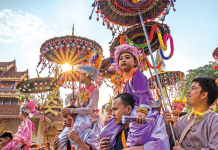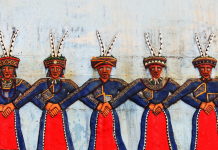Monarchies have been associated with majesty, mercilessness, and even madness. Few absolute monarchies remain – but in some states, blood still runs thicker than water
Text Sophie Ibbotson
There was a time when a king needed no mandate from his subjects. His right to rule was considered divine. He (and it was almost always a man) was appointed by God, and thus no mere mortal had the right to question, challenge, or dethrone him.
From the very first rulers of Mesopotamia, who regarded their kings as deities after death, through the royal dynasties of China and Japan, South and Southeast Asia, the king’s “Mandate of Heaven” was taken as read. For who would risk incurring the wrath of God? Even if you were not a believer, the king’s wealth and power, large army, and fortified palace would have been a more than adequate deterrent.
But the world changed. The thinkers of the Renaissance began to argue against the divine right of kings, and slowly but surely, power began to shift to the people. Country after country exiled or decapitated their erstwhile rulers, replacing them with elected presidents. Being the firstborn son of a king no longer guaranteed your right to rule.
Today, just 43 countries around the world still have monarchs as their head of state (44, if you count the Pope in the Vatican). Of these, 16 are Commonwealth states, led by Britain’s Queen Elizabeth II, and she appoints governors general in each country to fulfil her constitutional functions.
Some monarchies are absolute monarchies – all the power is vested in a single person – whereas others are constitutional monarchies, where the monarch is legally bound to act in accordance with the constitution, and shares power with an elected head of government.
But what specifically of the monarchies in Asia? Where are they, and how do they function? Are they still relevant in the modern world? We examine five of the most interesting cases.
Bhutan: Land of the Thunder Dragon

I will follow in my father’s footsteps. My father set the bar very high. He was a wonderful leader.
– King Jigme Khesar Namgyel Wangchuck
“The Land of the Thunder Dragon”, Bhutan, is the last great Himalayan kingdom. All around it, monarchies have fallen, but somehow, the tiny kingdom of Bhutan has survived.
When you start to dig, however, you realise that this should come as no surprise. Bhutan’s mountainous landscape, and the fortresses and dzongs (fortified monasteries) within them, have historically been considered impregnable. The Bhutanese have been largely left to themselves. Recognising the benefits of good relations with their neighbours, however, Bhutan’s kings have taken pragmatic approaches. They worked hard to unite their political enemies within the country, signed a subsidiary alliance with the British to keep control of everything but their foreign affairs, and looked outside Bhutan to see what forms of government worked best in the modern world.
It was the king of Bhutan, Jigme Dorji Wangchuck, who took the initiative and set up Bhutan’s National Assembly in 1953. He created a royal advisory council and a cabinet. When his son inherited the throne in the 1970s, he continued his father’s reformist tendencies.
Today, Bhutan is a constitutional monarchy. Almost all of the king’s powers have been transferred to the Council of Cabinet Ministers, and the National Assembly has the right to impeach him. Bhutan’s current king, Jigme Khesar Namgyel Wangchuck, is one of the youngest monarchs in the world. He, like his father and grandfather before him, is a reformer, genuinely well liked by his people, and is at pains to ensure they are all beneficiaries of his national policy of Gross National Happiness.
Thailand: A New Era
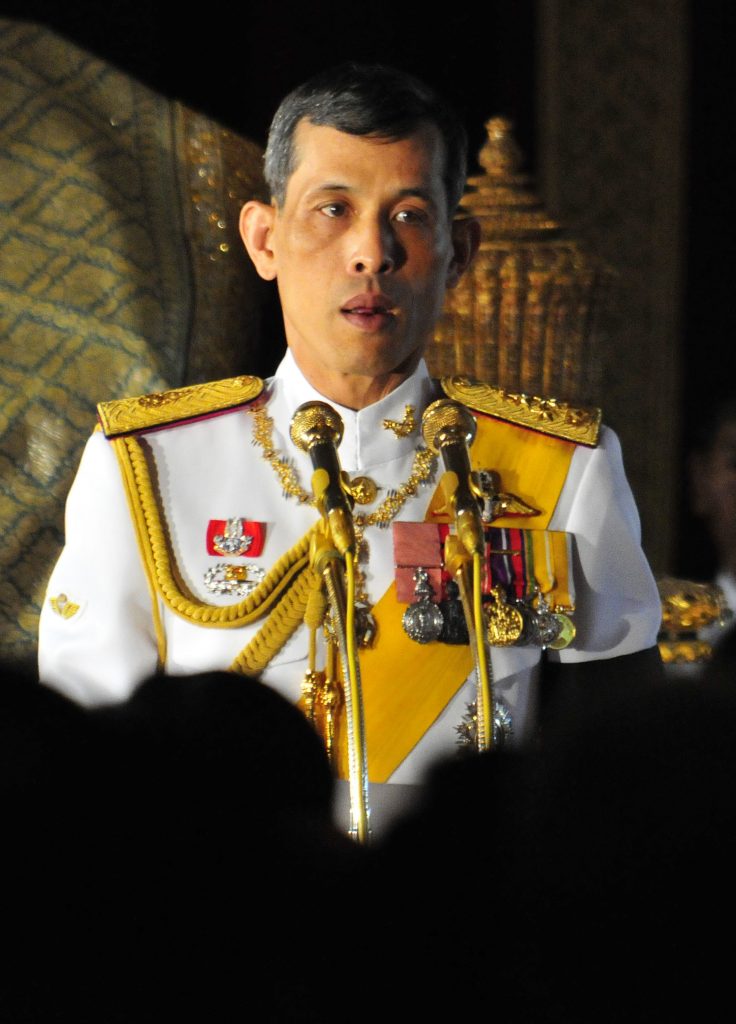
Why is it that the king can do no wrong? This shows they do not regard the king as being a human. But the king can do wrong.
– King Bhumibol Adulyadej (1927–2016)
The king of Thailand, Maha Vajiralongkorn, has been king for less than a year, inheriting the crown on the death of his father, the much-loved King Bhumibol Adulyadej, in October 2016. He was educated in the UK and Australia, as well as in Thailand, and after becoming crown prince, had to wait more than 40 years to finally ascend to the throne. During this time, he served in the armed forces, was ordained as a monk, and set up a series of projects in healthcare, education, and agriculture, thus gaining experience outside the palace walls.
What exact political role the new king will have in Thailand is yet to be confirmed. He requested changes to the interim constitution after it was approved in a 2016 referendum, and the follow-up general election is yet to take place.
However, his place as head of state seems assured. Thailand has had no fewer than 19 constitutions and charters since it became a constitutional monarchy in 1932, but every single government has accepted the hereditary monarch as the head of state. The Thai regal position gained in both influence and wealth under the late King Bhumibol.
Brunei: The Abode of Peace
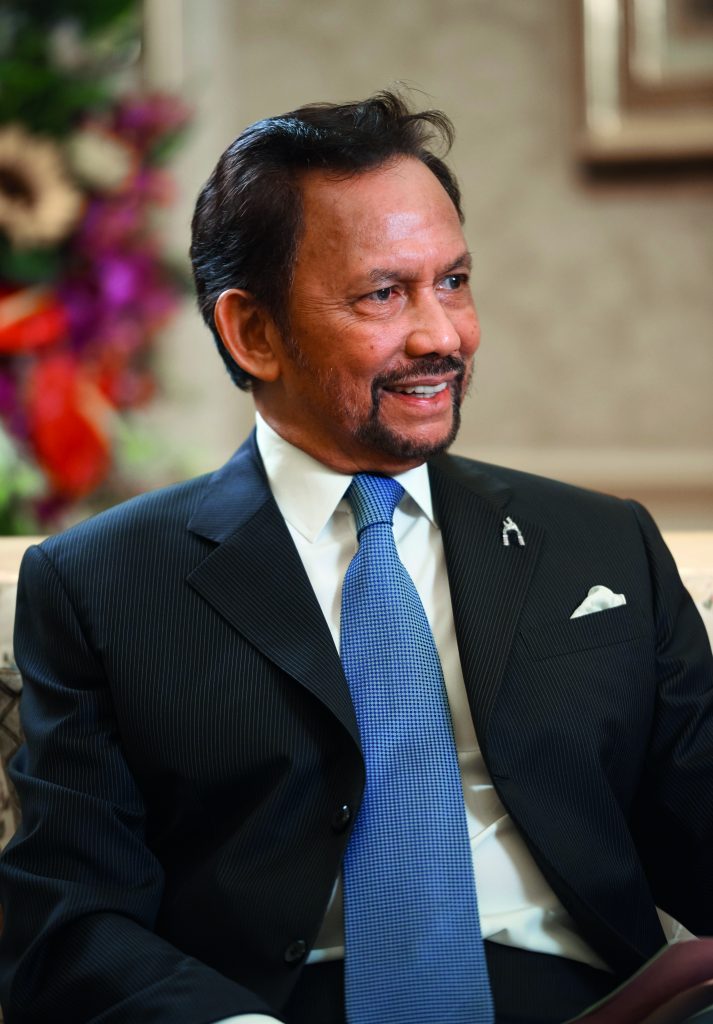
There is no conflict between favouring Islamic and traditional values and being more open and international.
– Sutan Hassanal Bolkiah
Another tiny monarchy, perched on the northern shore of Borneo, Malaysia is – to give it its full name – the Nation of Brunei, the Abode of Peace. Brunei only became independent from Britain in 1984, and it was then that the current sultan, Hassanal Bolkiah, became head of state.
However, the Brunei sultanate has its origins in the late 14th century, so the 100 years in which the country was a British Protectorate is seen as but a temporary aberration.
Brunei is an absolute monarchy, with the sultan having full executive authority, including emergency powers. He is not only the head of state, but also the prime minister, finance minister, and defence minister. The sultan rules guided by a philosophy he calls Melayu Islam Beraja (“Malay Islamic Monarchy”), which is a blend of Malay customs and culture, Islamic law, and the system of the monarchy. The sultan and his family have a venerated status within Brunei.
This form of monarchy may seem archaic, and would not be tolerated in many other parts of the world, but in Brunei it is remarkably stable and effective. Brunei is amongst the richest countries in the world (including in per capita GDP), and public debt is zero percent of the GDP. Economically, that’s an enviable position to be in, and it’s made possible by the country’s small population and high reserves of oil and natural gas. The sultan will mark his golden jubilee in 2018. He has only just turned 70, and he is in good health. The line of succession is already secured for the next two generations.
Japan: Emperor of the Rising Sun

I believe women have played major roles, both tangible or intangible, in the imperial family.
– Emperor Akihito
The world’s oldest continuous hereditary monarchy is in Japan. Emperor Akihito, the reigning emperor, is the 125th ruler to sit on the Chrysanthemum Throne in an unbroken line dating back to 660 BCE.
As he is now 83 years old, and not in particularly strong health, there have been some indications that he may abdicate for his son, the crown prince Naruhito, to ascend to the throne. But at the time of writing, Akihito remains in power.
The Emperor of Japan is the head of state, but as the country has been a constitutional monarchy since 1947, it is largely a ceremonial position. Unlike many other monarchies, the emperor is neither the nominal chief executive nor the commander in chief of the armed forces – these responsibilities fall to the prime minister and the cabinet. Tradition has it, however, that the emperor is descended from the sun goddess Amaterasu, and so he is also a religious authority in the Shinto religion, and must participate in certain sacred rites.
The standing of the royal family in Japan is unusually strong, no doubt in part due to the longevity of the monarchy as an institution, and the political stability it has brought the country. Emperor Akihito has pushed back at attempts by the prime minister to elevate him to the near-god status enjoyed by his ancestors, but he is nevertheless revered by the majority of Japanese people. There is widespread support for his son, Naruhito, to succeed him when he is ready to step down.
UAE: Cities of Gold
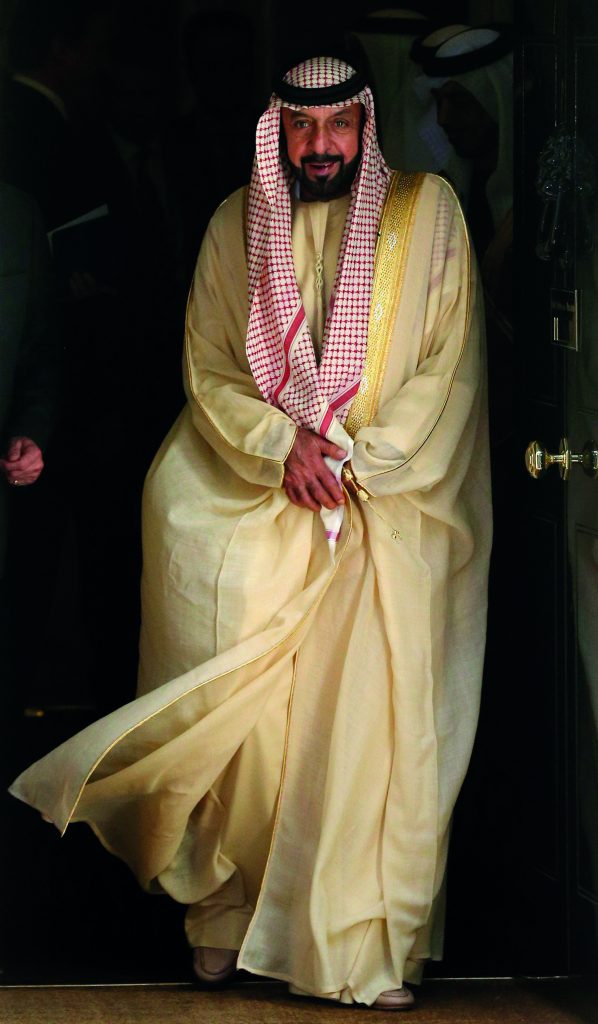
The ruler, any ruler, is only there to serve his people and secure for them prosperity and progress.
– Sheikh Zayed bin Sultan Al Nahyan (1918–2004)
“King of kings” has been a popular – if hyperbolic – title for rulers since the time of the Assyrian Empire. But in the case of the emir (king) of Abu Dhabi, it’s actually true. Khalifa bin Zayed bin Sultan Al Nahyan is the head of state of the UAE, which is a federation of seven emirates, each with its own hereditary emir.
The UAE is a particularly curious case. The state was only created in 1971, and yet whereas other newly independent states opted for modern, democratic forms of government, doing away with the vestiges of hereditary rule, the sheikhs chose an autocracy. This reinforced traditional tribal hierarchies and allegiances, but created a can of worms for the future.
The challenges of an absolutely monarchy for the UAE are two-fold. Firstly, there’s the issue of rivalry between the emirates and between princes. Sheikh Zayed, founder of the nation, had 30 children. Love is not lost between them, and they wrestle for power behind palace walls. Allegations of attempted coups are frequent, although the country’s security apparatus works hard to keep them quiet.
Secondly, this absolute monarchy has no means for dealing with protest or opposition. Corruption is endemic, and human rights abuses – especially of vulnerable migrant workers – frequent. The UAE ranks poorly for civil liberties and political rights. Amnesty International has accused the UAE of an “unprecedented clampdown” on dissent. Those who question the emirs are imprisoned, exiled, silenced.
But no ruler can keep his people down forever. If history has anything to teach us, it is that one day they will rise up and take back power. For an absolute monarchy, ultimately, it’s a case of reform, or die.
Related: Democratisation, Interrupted
Related: The Hammer, Sickle and a Love for Money
Related: Pens Under Pressure
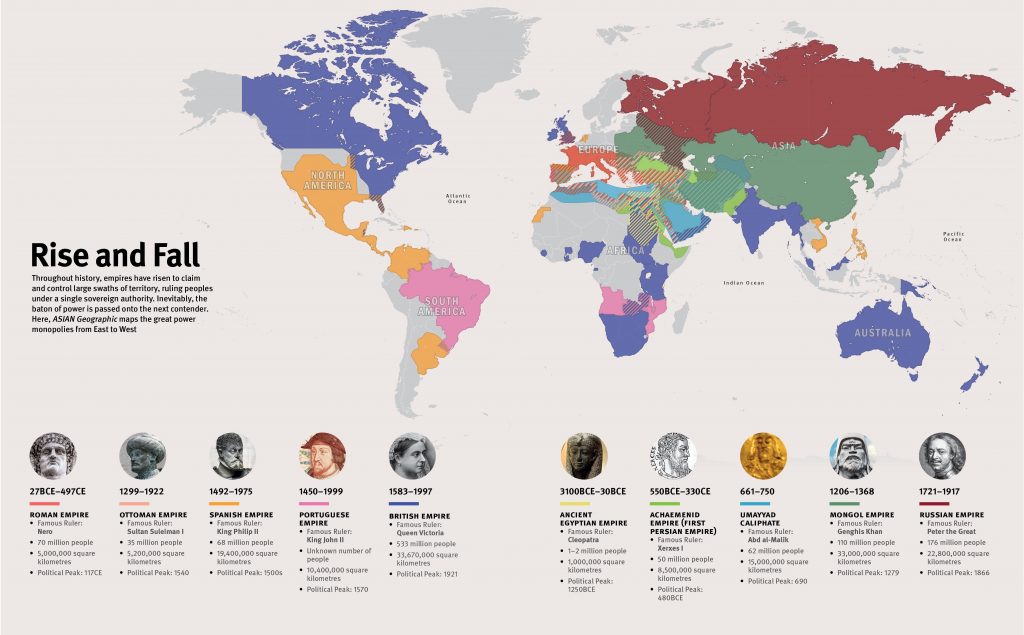
Bonus: The Three Mad Kings
England’s King George III is widely known for his paranoia and madness, but these three historic royals in Asia give him a run for his money.
- Nebuchadnezzar II of Babylon (604–562 BCE)
In the Old Testament, Babylonian ruler King Nebuchadnezzar famously recounts his descent into madness. According to the story, the conceited royal was punished for his disbelief in the Hebrew’s God, exiled to the wild to live like an animal, where he descended into howling insanity. This biblical story accounts for the means by which royal insanity was measured in Judeo-Christian times.
- The Zhengde Emperor of China (1491–1521)
Known for his malice and irrationality, this emperor of the Ming Dynasty had a penchant for embarking on impulsive military crusades.He was also flanked by one General Zhu Shou, who was completely imaginary. After he and his head of state affairs, Liu Jin, had a falling out, the emperor reportedly sentenced the unfortunate eunuch to three days
of torture of “slow slicing”.
- Ivan the Terrible (1533-1584)
His name says it all. The first tsar of Russia is known for expanding his territories into Eastern Europe’s Kievan Rus, and spearheading the brutal secret police. He carried out the systematic, and sadistic, torture of nobleman. He even murdered his own son, killing him after kitting him with a pointed staff in a particularly heated temper.
For more stories on politics, see Asian Geographic Issue 126.


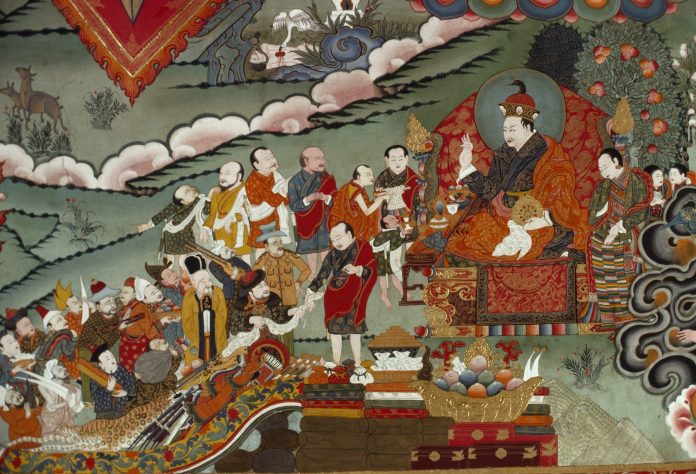
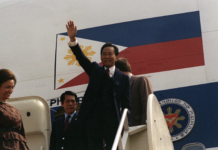
![The Road to Independence: Malaya’s Battle Against Communism [1948-1960]](https://asiangeo.com/wp-content/uploads/2021/07/WhatsApp-Image-2021-07-26-at-11.07.56-AM-218x150.jpeg)
